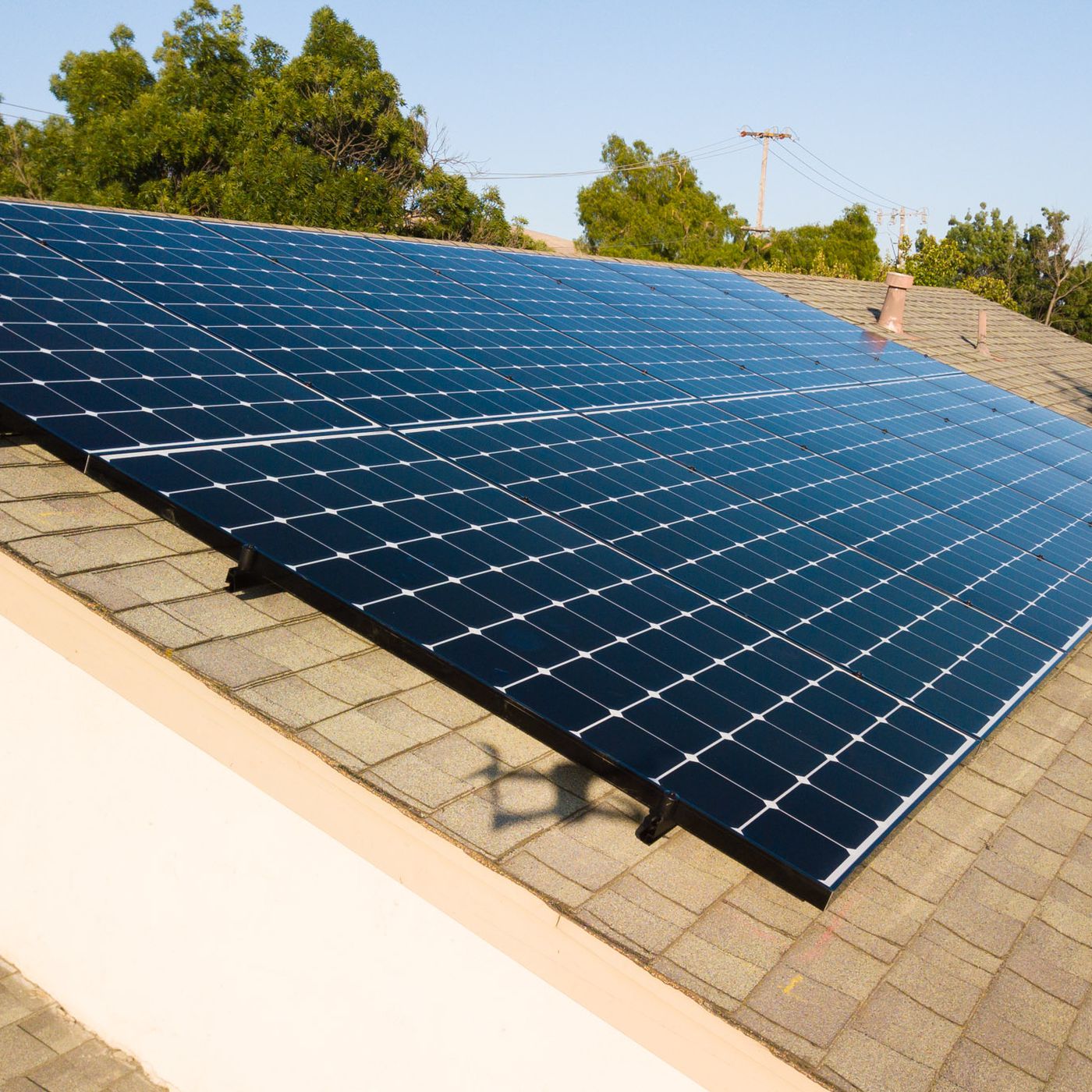6.8 Solar Energy
2 min read•january 7, 2023
Karla Jauregui Sandoval
Karla Jauregui Sandoval
What is Solar Energy?
Solar energy is energy that is produced from the sun. It is a renewable energy source, which means that it can be replenished naturally over time. Solar energy is harnessed through the use of solar panels, which are made up of photovoltaic cells. In much older civilizations, this was imitated using glass and heat from the sun to spark fires. Now, these cells convert sunlight into electricity, which can be used to power homes, businesses, and other buildings.
Image Courtesy of The Verge

Photovoltaic cells (PV cells) are electrical cells that allow the light energy of the sun to be converted into electricity. PV cells are usually made with purified silicon and traces of metals that allow them to act as semiconductors.
Sunlight photons hit the solar cell, which then knocks electrons loose from their atoms. If conductors are attached to the positive and negative sides of a cell, an electrical circuit forms. The movement of electrons in the circuit equals electricity! Because each cell only produces a small quantity of electricity, many cells are then wired together to an electrical grid on a panel.
Benefits 👍🏻 | Drawbacks 👎🏻 |
|
|
Watch: Environmental Science
Key Terms to Review (5)
CO2 emissions
: CO2 emissions refer to the release of carbon dioxide gas into the atmosphere due to human activities such as burning fossil fuels (coal, oil, natural gas), deforestation, and industrial processes. Carbon dioxide is one of the major greenhouse gases contributing to climate change.Electrical circuit
: An electrical circuit is a closed loop through which electric current flows. It consists of components such as wires, resistors, capacitors, and switches that are connected together to allow the flow of electricity.Energy storage system
: An energy storage system refers to a device or mechanism that stores excess energy for later use, allowing for the efficient management and utilization of energy resources.Renewable energy
: Renewable energy refers to energy sources that can be replenished naturally within a human lifetime. These sources include solar power, wind power, hydropower, geothermal energy, and biomass.Solar energy
: Solar energy refers to the radiant light and heat from the sun that can be harnessed and converted into usable forms of power. It is a renewable energy source that provides clean and sustainable electricity.6.8 Solar Energy
2 min read•january 7, 2023
Karla Jauregui Sandoval
Karla Jauregui Sandoval
What is Solar Energy?
Solar energy is energy that is produced from the sun. It is a renewable energy source, which means that it can be replenished naturally over time. Solar energy is harnessed through the use of solar panels, which are made up of photovoltaic cells. In much older civilizations, this was imitated using glass and heat from the sun to spark fires. Now, these cells convert sunlight into electricity, which can be used to power homes, businesses, and other buildings.
Image Courtesy of The Verge

Photovoltaic cells (PV cells) are electrical cells that allow the light energy of the sun to be converted into electricity. PV cells are usually made with purified silicon and traces of metals that allow them to act as semiconductors.
Sunlight photons hit the solar cell, which then knocks electrons loose from their atoms. If conductors are attached to the positive and negative sides of a cell, an electrical circuit forms. The movement of electrons in the circuit equals electricity! Because each cell only produces a small quantity of electricity, many cells are then wired together to an electrical grid on a panel.
Benefits 👍🏻 | Drawbacks 👎🏻 |
|
|
Watch: Environmental Science
Key Terms to Review (5)
CO2 emissions
: CO2 emissions refer to the release of carbon dioxide gas into the atmosphere due to human activities such as burning fossil fuels (coal, oil, natural gas), deforestation, and industrial processes. Carbon dioxide is one of the major greenhouse gases contributing to climate change.Electrical circuit
: An electrical circuit is a closed loop through which electric current flows. It consists of components such as wires, resistors, capacitors, and switches that are connected together to allow the flow of electricity.Energy storage system
: An energy storage system refers to a device or mechanism that stores excess energy for later use, allowing for the efficient management and utilization of energy resources.Renewable energy
: Renewable energy refers to energy sources that can be replenished naturally within a human lifetime. These sources include solar power, wind power, hydropower, geothermal energy, and biomass.Solar energy
: Solar energy refers to the radiant light and heat from the sun that can be harnessed and converted into usable forms of power. It is a renewable energy source that provides clean and sustainable electricity.
Resources
© 2024 Fiveable Inc. All rights reserved.
AP® and SAT® are trademarks registered by the College Board, which is not affiliated with, and does not endorse this website.
